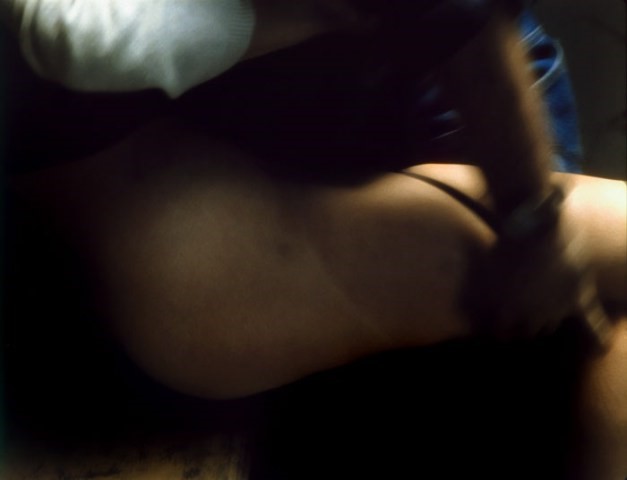- Hubertus von Amelunxen
- Mark Andre
- Fritz Auer
- Frank Badur
- Miroslaw Balka
- Carola Bauckholt
- Constanze Becker
- Marcel Beyer
- Annesley Black
- Lothar Böhme
- Jutta Brückner
- Richard Deacon
- Friedrich Christian Delius
- Hartwig Ebersbach
- Heinz Emigholz
- Ayşe Erkmen
- Thomas Florschuetz
- Matthias Flügge
- Jochen Gerz
- Annette Gigon
- Erhard Grosskopf
- Guido Hager
- Jens Harzer
- Birgit Hein
- Kerstin Hensel
- Wulf Herzogenrath
- York Höller
- Alexander Horwath
- Nicolaus A. Huber
- Alfonso Hüppi
- Magdalena Jetelova
- Johannes Kalitzke
- Regine Keller
- Günter Kunert
- Reiner Kunze
- Mark Lammert
- Thomas Lehr
- Regine Leibinger
- Sibylle Lewitscharoff
- Peter Lilienthal
- Luca Lombardi
- Ulrike Lorenz
- Dagmar Manzel
- Volkwin Marg
- Ulrich Matthes
- Friederike Mayröcker
- Jeanine Meerapfel
- Günter Nagel
- Peter Nestler
- Hans Neuenfels
- Marcel Odenbach
- Emine Sevgi Özdamar
- Wolfgang Pehnt
- Gustav Peichl
- Hans Helmut Prinzler
- Edgar Reitz
- Rolf Riehm
- Monika Rinck
- Ian Ritchie
- Kathrin Röggla
- Ulrike Rosenbach
- Michael Ruetz
- Matthias Sauerbruch
- Jörg Schlaich
- Kathrin Schmidt
- Michael Schoenholtz
- Cornelius Schwehr
- Georg Seeßlen
- Lutz Seiler
- Arila Siegert
- Enrique Sobejano
- Mathias Spahlinger
- Ernstalbrecht Stiebler
- István Szabó
- Rosemarie Trockel
- Margarethe von Trotta
- Manos Tsangaris
- Valery Tscheplanowa
- Gisela Tuchtenhagen
- Klaus Völker
- Wilfried Wang
- Dorothee von Windheim
- Siegfried Zielinski
- Walter Zimmermann
telling a work of art /
Arbeiten die man sich erzählen kann
an e-mail project by Karin Sander
Betreff: BEITRAG ZU Telling a Work of Art
Datum: Sat, 2 Mar 2019 16:20:00
Von:
Alexander Horwath
An:
Karin Sander

Unstilled
She turns away from him, slaps him, shouts at him. He’s lied to her for almost twenty years: about his name, his past, his “whole” identity. He used to be a gangster and a killer. Her shout is hard and clear, and given all the training we’ve received from our agencies of normalization, I’m sure most of you, too, will find it hard to believe that she actually wants to “Fuck you, Joey!” now, but then she does.
At this point, 65 minutes into A History of Violence, somebody in the audience always laughs. In all likelihood, that’s a defense. Not because the scene is about “weird, violent sex” (it isn’t), but because it makes so shockingly apparent how sex normally works, how desire and its fulfillment are fed by fantasy and language, and not by any recognition of The Man I Love. It’s about the way language begets action, with no force of reason in between: ordinary word becomes extraordinary deed. There’s a potential fuck in every “Fuck you!” uttered on this planet (and vice versa, I’m afraid). And there is always more than one in the one who turns me on. In this scene, on a flight of stairs, between the stories so to speak, we see them all at once: rapist, lover, hapless victim, father, killer, husband, hero, liar.
The way the scene is shot, it turns against another false assumption about identity and sexuality: the idea that we fuse with each other when we have satisfying sex. Again, I think the opposite is true: it’s more about diffusion, dissolution, or division. There seem to be more than two bodies involved at several points in the scene, whole humans dissolving into severed limbs, parts of bodies and identities transected by (frame)lines, (G-)strings and sudden movements. Face and individuality recede from view; name, person and character are deemphasized. Which is exactly what the still image from this scene articulates, too. We never leave the realm of narrative, figurative film- and image-making, but the riffs of abstraction invite us to ponder it from a certain distance. Abstraction, here, is not a means to “purify” the image, to get rid of figure or perspective, or to search for full frontal medium-specificity. Just like a Bellmer doll, or a figure by Bacon, this image “talks about” more than just black, blue, white and incarnate patches of color. It’s the kind of abstraction that looks for a philosophical, existential stance. It allows us to reject the teary-eyed view of humankind so common in life and movies, and adopt a “see-through,” clear-view humanism which is less interested in authentic selves and characters “of flesh and blood” than in the shards and splints of self and character when flesh, blood, fantasy and language have run their course.
As Bosworth and Toller’s Anglo-Saxon Dictionary (1898) tells us, the ancient adjective “unstille” refers to states of inquietude: “not at rest, moving,” “disturbed,” “not at peace, troubled.” Apart from describing the natural state of a viewer at the end of a David Cronenberg film, it’s also the most fitting expression for a movie-still in which the picture keeps on moving.
Alexander Horwath
Liebe Karin Sander,
Das Werk, das in meinem Text beschrieben wird, ist eine Fotografie von David Cronenberg, die er schon einige Male ausgestellt hat. Er hat sie einem seiner Filme entnommen: A History of Violence (2005), wie im Text ohnehin klar werden sollte. Unstilled ist also der Titel meines Texts, nicht der Titel des Werks von Cronenberg.
Mit herzlichem Gruß
Alexander Horwath